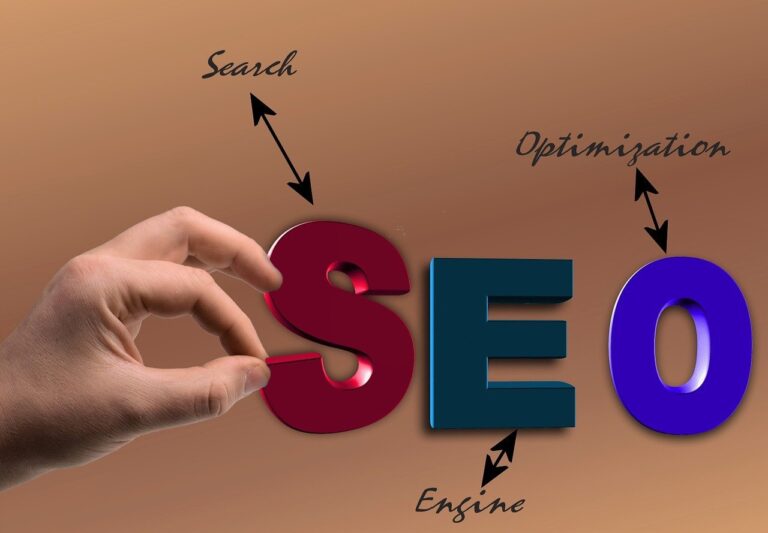For B2B SaaS companies, aligning their sales funnel with a powerful SEO strategy is essential for turning online traffic into paying customers. With complex product offerings and a subscription-based model, SaaS businesses must ensure they don’t just focus on attracting clicks but on converting those clicks into customers by tightly connecting SEO to each stage of the buyer’s journey. By addressing human emotional needs and leveraging data-driven insights, B2B SaaS SEO aims to create content that captures attention and guides prospects smoothly through the funnel, ultimately converting them into loyal subscribers.
Let’s explore how B2B SaaS companies can leverage keywords, create targeted content, and measure conversions at every stage to align SEO with their sales funnel, convert interest into tangible sales opportunities, and ensure every click leads toward business growth.
What is SaaS SEO?
SaaS SEO is the process of optimizing a Software as a Service (SaaS) company’s online presence to attract, engage, and convert potential customers. SEO for SaaS businesses focuses on improving search engine rankings by targeting the right keywords, optimizing technical aspects of the website, and creating content that resonates with prospects at each stage of the buyer’s journey. SaaS SEO is particularly important because it helps potential customers find your product when they search for solutions to the specific problems your software solves.
Unlike other industries, SaaS companies sell software subscriptions that often involve complex solutions, recurring billing models, and a long customer lifecycle. Therefore, SaaS SEO is not only about driving traffic but about attracting qualified leads who are more likely to convert into paying subscribers and remain loyal customers. This requires a deep understanding of the SaaS product, buyer personas, and the different touchpoints that influence the customer’s decision-making process. It also involves ongoing optimization to stay relevant as product features evolve and customer needs change..
How is SaaS SEO Different from Other Types of SEO?
SaaS SEO differs from SEO strategies for other industries due to the unique nature of SaaS products and customer relationships. Here are key differences:
- Subscription Model and Customer Retention: SaaS businesses typically operate on a subscription model, not a one-time purchase model, meaning that customer retention is just as important as acquisition, and SEO must address new and existing customers alike. SEO strategies must focus on driving long-term engagement by providing ongoing value through content, product updates, and customer support resources.
- Complex Product Offerings: SaaS products often involve highly technical and complex solutions, which require a more detailed and educational approach in content creation. SEO for SaaS must be able to explain intricate product features and how they address specific customer pain points, often using long-form, in-depth content to do so.
- Longer Sales Cycle: The B2B SaaS sales cycle is generally longer compared to other industries, meaning that SEO content must nurture leads over time. Prospects often go through multiple stages of research and consideration before making a purchase decision. SaaS SEO must guide prospects through the entire journey—from awareness to consideration to decision—with content that educates, builds trust, and drives conversions.
- High Competition for Keywords: SaaS companies often compete for highly targeted and competitive keywords related to specific industries or problem-solving solutions. SEO efforts must focus on optimizing for both broad search terms and niche long-tail keywords that directly address the customer’s needs at different stages of the buying journey.
Understanding these differences allows SaaS companies to build SEO strategies that cater to the unique needs of their product and audience, ultimately driving more relevant traffic and improving conversions.
The Foundation of SEO: Technical SEO and User Experience
Before diving into content strategy, it’s important to establish that technical SEO is the backbone of your entire SEO process. Without a solid technical foundation, even the most targeted and compelling content will struggle to rank or convert effectively. For SaaS companies, optimizing technical SEO ensures that your website provides the best possible user experience (UX), which search engines reward with better rankings.
- Website Framework: A well-structured site lays the groundwork for SEO success. This includes creating clean URL structures, organizing content logically, and implementing proper schema markup to help search engines understand your content.
- Page Speed Optimization: Page loading speed significantly impacts user experience and SEO rankings. SaaS websites often deal with a lot of dynamic content, which can slow loading times. Optimize images, enable browser caching, and use content delivery networks (CDNs) to ensure pages load quickly.
- Mobile Optimization: Given the increasing number of users accessing websites on mobile devices, it’s critical to ensure that your SaaS site is fully mobile-responsive. This includes ensuring text is readable, buttons are easily clickable, and the layout adjusts smoothly for smaller screens.
- Cleaning Up Links: Internal linking is a powerful SEO tactic that helps search engines and users navigate your site. Ensure your site has a logical internal linking structure that connects relevant pages. This keeps users engaged and improves crawlability. Remove any duplicate topic pages that could confuse search engines or dilute the value of your content.
By implementing these technical SEO best practices, you create a seamless UX that not only keeps visitors on your site but also improves rankings. Once your technical foundation is strong, you can shift focus toward aligning your SEO efforts with the sales funnel, using content and keywords to guide prospects through each stage.
The Role of Keywords in Guiding Content and Conversions
A successful B2B SaaS SEO strategy depends heavily on keyword research. Different keywords target different stages of the buyer’s journey, and aligning these with the appropriate content ensures prospects can find what they need when they need it.
- Short-Tail Keywords: These high-volume, general keywords capture early-stage search intent and are typically harder to rank for due to broad competition. Examples include “SaaS software” or “best project management tools.” While they bring in more traffic, these keywords often attract prospects who are still exploring their options and not yet ready to make a decision.
- Long-Tail Keywords: As prospects move further down the funnel, they use more specific, lower-volume keywords that indicate a clearer understanding of their needs. Long-tail keywords like “SaaS customer support solution” or “best project management software for small teams” attract more qualified leads who know exactly what they’re looking for.
- Transactional Keywords: At the decision stage, buyers search for action-oriented terms like “subscribe to SaaS” or “get a project management software demo.” Your money pages—home and product pages—should be optimized for these high-intent keywords, guiding users to complete a purchase or sign up for a demo.
By mapping out your content to match keyword intent at every stage of the sales funnel, you create a seamless path from awareness to decision, driving higher conversions and more qualified leads. These keywords not only attract traffic but also guide the creation of targeted content that aligns with each buyer’s journey, ensuring that every piece of content fulfills a specific role in moving prospects through the funnel.
Crafting the Right Content for B2B SaaS SEO
Content is the vehicle that drives prospects through your sales funnel, but it must be informed by the keyword data you’ve gathered. Each content type should align with the intent and needs of your audience, and keyword insights help you determine which types of content will resonate most at each stage of the funnel. Let’s break down the key types of content SaaS companies should focus on.
- Blog Content and Help Guides: At the top of the funnel, information-based content like blog posts and help guides are essential for attracting prospects in the research phase. These content pieces should be optimized for long-tail keywords, helping your brand rank for specific queries. Educational in nature, they provide valuable insights, answer questions, and build trust with early-stage prospects who are not yet ready to convert but are engaging with your brand.
- Money Pages (Home and Product Pages): These pages are the critical conversion points of your website. Your home and product pages should be optimized for high-converting, transaction-focused keywords. All traffic-driving efforts—from SEO to paid ads—should lead prospects to these pages, where they can engage with product features, benefits, and clear calls to action like ‘Buy Now’ or ‘Get a Demo.’ These are your ‘money pages’ because they have a direct impact on your bottom line and serve as the primary hubs for driving conversions.
- Case Studies and Testimonials: These content types become essential as prospects move closer to a decision. Case studies and testimonials offer social proof and provide real-world examples of how your SaaS product has solved business challenges for others. They add credibility and help reduce any doubts before making a purchase or committing to a demo. Positioned at the bottom of the funnel, this content can be the final push needed for prospects to choose your solution over competitors.
By using keyword data to craft your content, you ensure that each piece serves a purpose in moving prospects through the funnel. From broad educational content to highly targeted, conversion-focused money pages, keyword insights guide you in delivering the right message at the right time.
Measuring Success: Data-Driven Insights and Conversions
For B2B SaaS companies, data is king. The key to a successful SEO strategy is continuously measuring its effectiveness through data-driven insights. This involves tracking keyword rankings, monitoring conversion rates, and analyzing how prospects move through the sales funnel.
- Keyword Rankings: Regularly assess how your content ranks for both short-tail and long-tail keywords. Tracking keyword performance helps you understand which pages are attracting the most traffic and where there are opportunities to improve rankings. By monitoring these metrics, you can identify which pages are pulling in the right audience and aligning with their search intent.
- Conversion Rates: Focus on how each piece of content contributes to your conversion goals along the customer journey. Measure the effectiveness of content at each touchpoint, using tools like Google Analytics to track which pages lead to demo sign-ups, purchases, or other key actions. Identify high-performing pages that are driving conversions and attribute their success to the content type or keywords used, then refine underperforming content to enhance results.
- Content Performance and Conversion Pathways: Continuously track the performance of your blog posts, help guides, case studies, money pages, and more. Analyze how these content types guide prospects through the conversion pathway by understanding which pieces move them closer to a purchase decision. By attributing sales and revenue to specific content types using Google Analytics tracking and CRM data, you can tie actual sales dollars to particular keywords, pages, and content journeys. This attribution helps ensure your content strategy is delivering measurable ROI and informs where to focus future content efforts.
Conclusion: From Traffic to Customers with B2B SaaS SEO
Success in B2B SaaS SEO goes beyond simply driving traffic—it’s about driving the right traffic, guiding those prospects through the sales funnel and converting them into paying customers. By focusing on technical SEO, crafting keyword-informed content, and leveraging data-driven insights, SaaS companies can build a powerful strategy that aligns SEO with their sales goals and leads to real conversions.
With Cureight’s Teams as a Service (TaaS) model, you gain access to senior marketing talent under one flexible retainer—eliminating the need to hire full-time staff. This allows you to efficiently scale your SEO and content efforts, ensuring your marketing spend remains agile and focused on strategies that turn clicks into customers.
Ready to take your B2B SaaS SEO strategy to the next level? Cureight offers tailored solutions that align content, SEO, and sales funnel strategies. Contact us today, and let’s start helping your SaaS business grow.


